A lot of readers will be interested in how to get the best price for their used cameras or lenses, or ensure they get the most bang for their buck when trading in. Read on for some expert advice
The market for second-hand cameras continues to grow steadily and it’s not hard to understand why. The past few years have seen continued economic contraction and as photographers, our spending power is being squeezed as never before.
Another factor is the quality of cameras and lenses released over the past decade: few genuinely ‘bad’ cameras have been released in the past few years. In this article, we are going to focus on how to get the best price for your camera and lens if you decide to sell it on. Scroll down for some useful tips for selling to reputable specialist dealers, which we strongly recommend, as well as some tips if you do decide to sell your gear to a private individual.
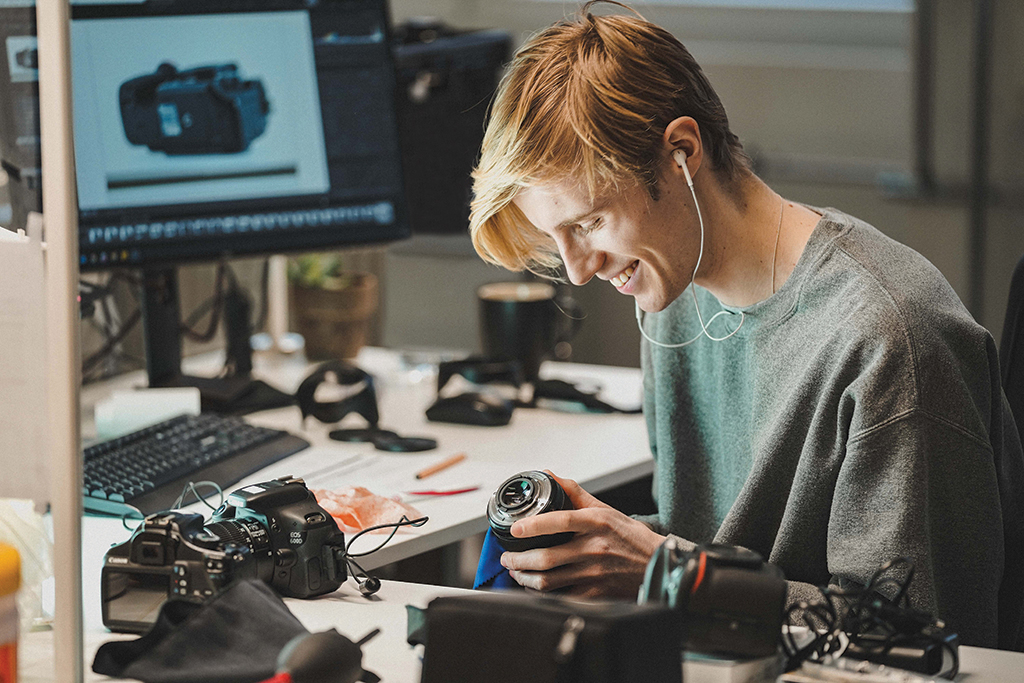
Retailers are usually happy to buy in quality, sought-after cameras, without the potential hassle of eBay. Picture credit: MPB
Be honest about the condition
Many specialist retailers will give you an initial free quote before you send in the gear for inspection. While it can be tempting to describe the condition as better than it actually is, in the hope that they’ll be too busy to check and will just cough up, the reality is that you’ll be fooling nobody. All equipment submitted for potential purchase or part exchange will be rigorously gone over by a specialist team, so check over what the definition of ‘as new’ actually means for that particular retailer.
‘When people log on to our site and request a quote, we always ask that they are as clear as possible in terms of condition,’ explains Jason Mitchell, managing director of CameraWorld. ‘Sometimes people overstate the condition – for example we use the term “as new”. This means that the item has either never been used or has barely been used, is complete with box and supplied accessories in a condition you would not differentiate from new. We often get gear that has clearly been used and has marks etc. or no box. In these cases, we must reduce the price offered.’
This is backed up by Adrian Deary from London Camera Exchange (LCE). ‘We thoroughly check the equipment so we can confidently offer a warranty and reassure the customer buying our used equipment. We check the shutter count, the condition of the sensor and that all the buttons and operations are functioning as they should.’
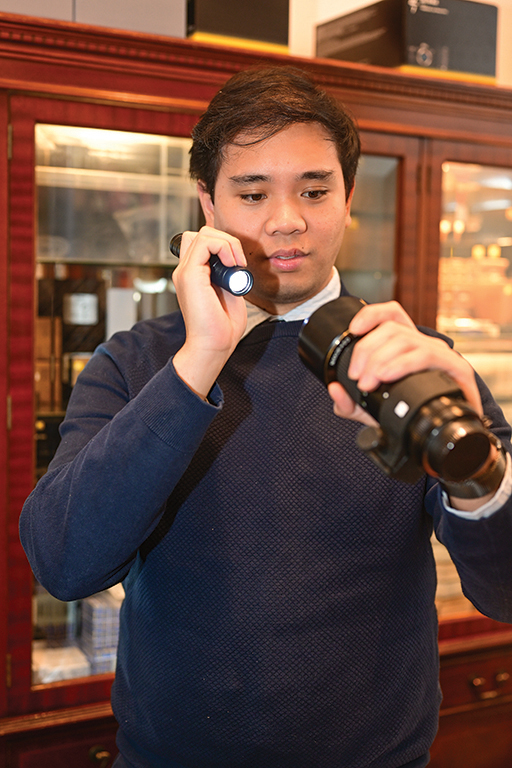
Do your absolute best to avoid mould in your lenses, as it can be a deal-breaker. Picture credit: Grays of Westminster
Mould is a killer
As well as obvious major problems, such as faulty camera electronics or scratched sensors, all the retailers we spoke to also agreed that mould or fungus inside a lens makes it very difficult to accept it for purchase or part exchange. ‘We’re rather strict about mould and we will never intentionally re-sell any camera or lens showing any sign of mould growth,’ says Andy Lorton of MPB. ‘It’s usually caused by moisture entering the internal elements, often due to broken weather-sealing or improper storage. Our product specialist teams are very good at spotting these signs.’
As CameraWorld’s Jason Mitchell explains, just leaving your equipment unattended for a long time can leave it vulnerable to mould, so it’s worth keeping an eye on any lens you’ve stored for a while. ‘We are often presented with items that suffer from fungus, as this can be caused when they are kept in, for example, a loft where air circulation is minimal, as well as not being used regularly. Even gear left for long periods in drawers can suffer. If the condition as a result is poor, the item is unsaleable unless a clean can be completed. In many cases, fungus can’t be treated.’
Don’t despair if there is a small amount of mould, however. According to Becky Danese from Grays of Westminster: ‘Very small amounts of fungus can be cleaned if caught early, but if a lens has been sitting in a cupboard for a prolonged period of time without attention, that mould eats into the coatings of the glass and the only way to salvage it is to replace optics.’
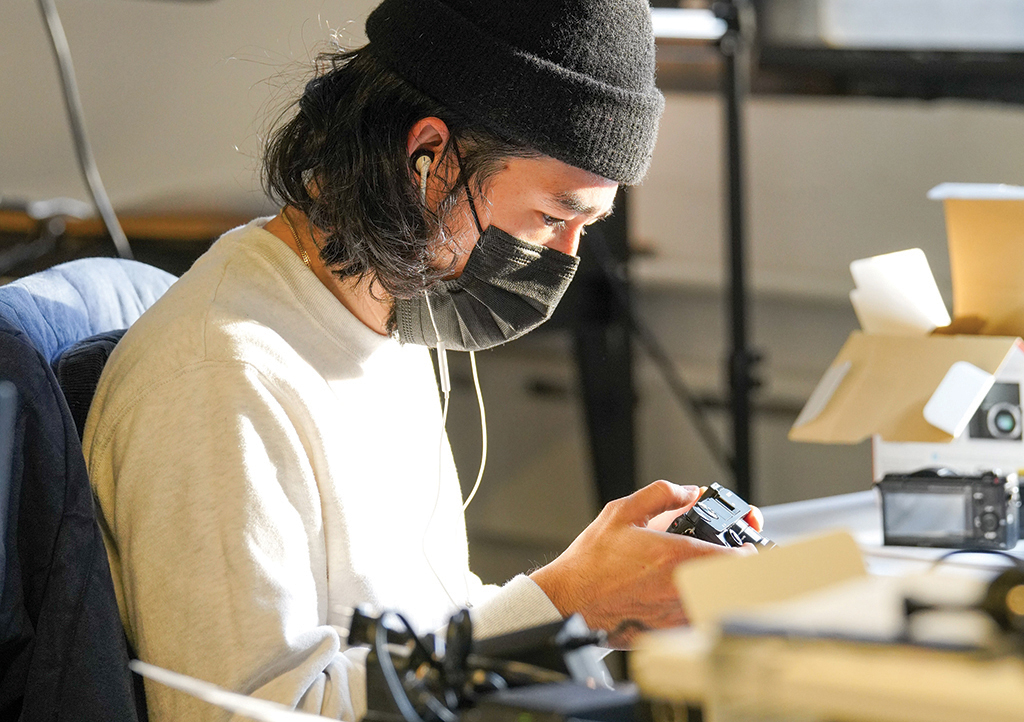
All reputable dealers undertake a thorough check before confirming an offer, including shutter count. Picture credit: MPB
Shutter count
When browsing dealer sites or eBay listings, you will often see a camera’s shutter count mentioned. We wondered how much of an issue this really is for people wanting to sell on their cameras – is it basically like car mileage, i.e. the lower the better, or does it depend on the camera? ‘As shutter count refers to the number of times the physical shutter mechanism opens and closes – to expose and cover the sensor – it’s only really relevant when you’re talking about DSLR camera bodies,’ explains MPB’s Andy Lorton.
‘Mirrorless cameras, on the other hand, are quite different — they don’t always have a physical shutter mechanism and aren’t moving mirrors up and down. Shutter count doesn’t really affect the image quality created by a DSLR, but it does give an indication of how much a DSLR has been used in the past. At MPB, the shutter count of a DSLR doesn’t affect its condition rating, however. ‘Instead, we pay our customers a higher price for a low shutter count, and a lower price for a high shutter count. So, you don’t have to worry about shutter count when you get a quote and provide the estimated condition. When we inspect your kit, we’ll just let you know if your quote needs to be adjusted based on shutter count.’
To put this in technological context, with DSLRs every press of the shutter button press means the mirror flips up, the shutter opens and closes, then the mirror drops down. So there is a lot of potential for mechanical wear and tear. With mirrorless cameras, it might just be the electronic first-curtain shutter, then the mechanical shutter ends the exposure.
CameraWorld pays very particular attention to shutter count. ‘The shutter count is the same as mileage on a car, and in all cases can seriously affect its value,’ says Jason Mitchell. ‘We make offers based on average use for the age of the item and the shutter count that is expected with average use. For high shutter counts, this can reduce the price by 50% or in some cases make it unsaleable.’
For Grays of Westminster too, shutter count remains a good yardstick of how hard a life a camera’s had, with some caveats. ‘We’ve seen beautiful cameras that have done hundreds of thousands of actuations, and beaten-up bodies with next to nothing on them, so obviously it is a little bit of a case-by-case scenario, but the quickest way to tell if a camera has been well-used is by its actuation count,’ says Becky Danese. ‘This is one of the biggest factors we take into account when giving an estimate on a camera before seeing it.’
Adrian Deary from LCE adds: ‘It really depends on the camera. Some shutters are rated higher than others, which will have a bearing, but none of it is an exact science and there is nothing to say it will last longer or shorter than its rated life. Having said all that, it is viewed like mileage on a car, so you can work out the percentage of its rated level for that camera which in turn is priced accordingly.’
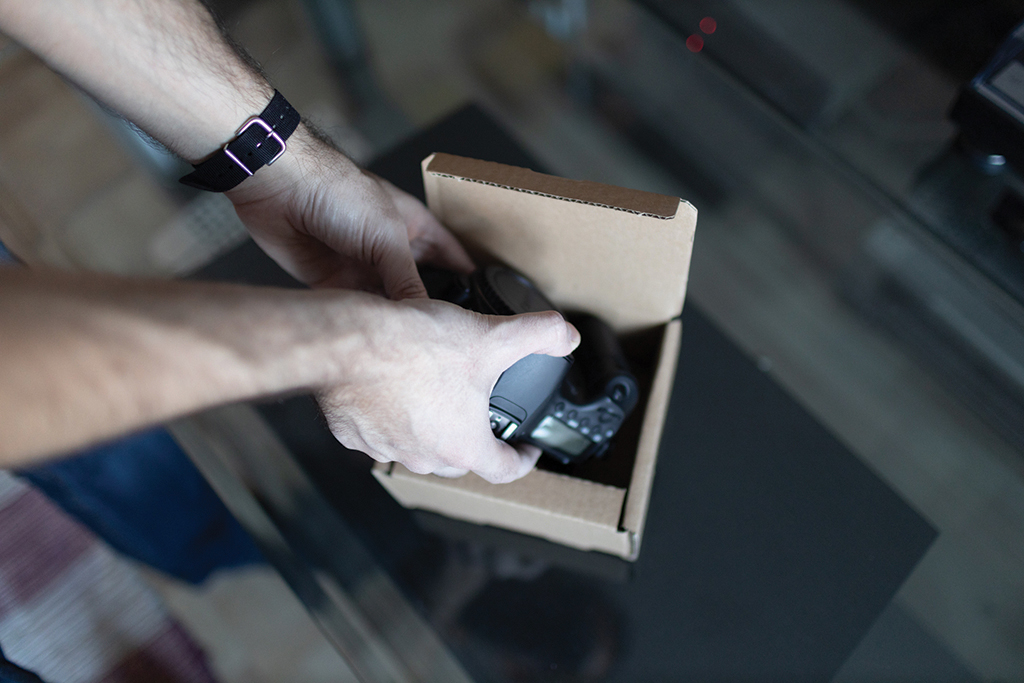
It sounds obvious, but you must pack your camera as carefully as possible before sending it in. Picture credit: Getty Images
Boxes and caps
Have you damaged or mislaid your camera’s original box, or some of the accessories such as lens or body caps? It’s not ideal, but might not be the end of the world. ‘When people sell to MPB, we always encourage them to include batteries, chargers, straps and any other accessories that originally came with the item, as well as the original manufacturer’s box,’ says the company’s Andy Lorton. ‘If there’s anything missing, we may need to lower the quote – this is so that the person who buys the item can get a fair price based on what is in the box. But we don’t reduce quotes any more than necessary.’
Becky Danese from Grays of Westminster goes into more detail about the company’s policy towards lenses. ‘They should always come with front and rear caps, and wherever possible the original lens hood and pouch too (if supplied when new). Because of that, if an item of equipment comes without accessories and we are required to replace these to sell the item on, then yes, we would make adjustments to the buying prices accordingly.’
Package your gear carefully
Never scrimp and save on packaging when you are sending in your used gear. ‘When sending items via courier, ensure you package it well to ensure it arrives safely and doesn’t get damaged in transit,’ urges Andy Steel of Park Cameras. ‘You’d also be amazed what some people use to protect their gear! We reuse all packaging received in order to be as eco-friendly as possible.’
Again, much of this is common sense; if you are selling a camera, make sure you have a body cap to protect the delicate innards (buy a generic one online if you have lost the original) and package a camera body and lens separately if you are selling as a pair. While many retailers will send a trusted courier to collect, giving you a receipt or tracking number, send any items you are selling to a private individual by registered post and keep the proof of postage.
What is in demand at the moment?
Demand for higher-end mirrorless cameras remains strong. ‘We will pay top prices for the latest gear such as Canon RF lenses, Nikon Z equipment and the latest Sony cameras and lenses,’ says Jason Mitchell from CameraWorld, and this is echoed by other dealers.
When a major new camera is released, dealers usually see a lot of the previous models coming in. ‘The Panasonic S5II was announced recently, so we are getting an influx of the S5 or GH5 series,’ notes James Barnes from Clifton Cameras. So, with the popularity of mirrroless, does this means used prices for DSLRs will keep falling? ‘It’s more with entry-level DSLRs,’ he notes.
‘The Canon EOS 1300D cost about £400 but we’re looking at £200 now and can see it dropping below £100. It’s the same with older DSLR lenses.’ Adrian Deary from LCE adds: ‘As you’d expect, we’ve seen an increase in price for items that are difficult to obtain new.’
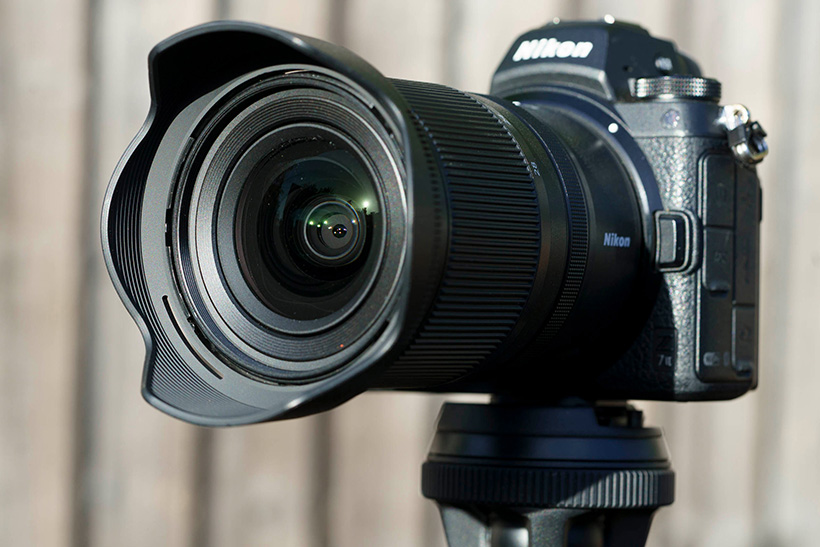
There is strong demand for quality used camera systems from retailers, such as the Nikon Z series
Ten tips for getting the best price for your gear
- Keep it clean
‘Give your equipment a basic, cosmetic clean before sending it in for inspection,’ advises Andy Steel of Park Cameras. ‘Whilst this won’t affect the price a great deal, it’ll reflect how you’ve treated the product when using it, which will show your item in the best light.’ This is backed up by James Barnes from Clifton Cameras. ‘When people go to buy, the first thing they will look at is the outside of the camera. So if your gear is nice and clean, you’ll get a better quote.’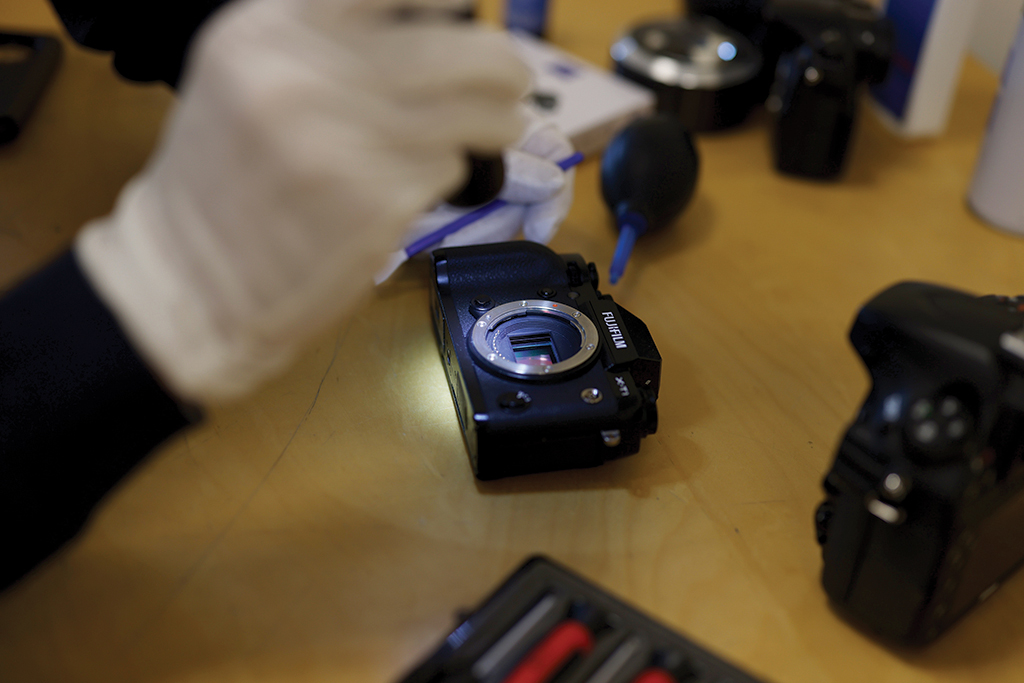
Giving your camera a good clean gives a good first impression. Picture credit: Park Cameras
- Keep it safe
‘Camera equipment retains its value remarkably well,’ says Andy Lorton from MPB. ‘You can help retain as much of that value as possible by keeping your camera and lenses safe from scratches, moisture and other damage. Use a blower and disposable cloth to keep your lenses free from dust and debris. You’d be surprised how friction from small specks of debris can scratch the glass. You can invest in an inexpensive UV filter to protect your lens glass without affecting the image quality.’ - Look out for bonuses
‘Keep an eye out for trade-in bonuses on new kit,’ advises Andy Steel of Park Cameras. ‘If you’re upgrading to something new, this can save you quite a bit of money (for example, on the recently announced Panasonic Lumix S5 II you can get a £300 bonus). Adrian Deary from LCE adds: ‘The used market is affected by seasonal promotions on the new equipment, sometimes quite heavily.’ - Get it serviced
‘Much like any other complex piece of equipment, cameras require periodic servicing and attention, and it is always appreciated by the future owner if the equipment has seen a sensor clean or service before it has gone up for re-sale,’ advises Becky Danese from Grays of Westminster. Servicing is particularly important with older film cameras, and there are lots of specialists who advertise online. James Barnes from Clifton Cameras also recommends getting your gear serviced before sale. ‘You might not even realise there is mould on the lens.’ Other dealers, notably Ffordes, reckon it’s more cost effective to get them to do any servicing that needs to be done, once they buy in your kit. - Careful with that sensor
If your sensor needs cleaning, don’t touch it or you might risk scratching it. ‘I’d always recommend staying on the safe side and getting it cleaned professionally,’ adds MPB’s Andy Lorton. - Be honest
‘Sellers should be as clear as possible when describing their gear to receive an accurate quote,’ emphasises Jason Mitchell of CameraWorld. ‘Ninety per cent of prices that we quote are honoured without any further deductions.’ - Show it in the best light
Nearly all of these previous points will apply if you are selling your gear to a private individual, but you also need to ensure you take attractive photographs of the equipment to appeal to customers. You might need to invest in some extra lighting equipment, but this can be done at a reasonable price. We’ve put together a comprehensive guide to taking great product shots for eBay here.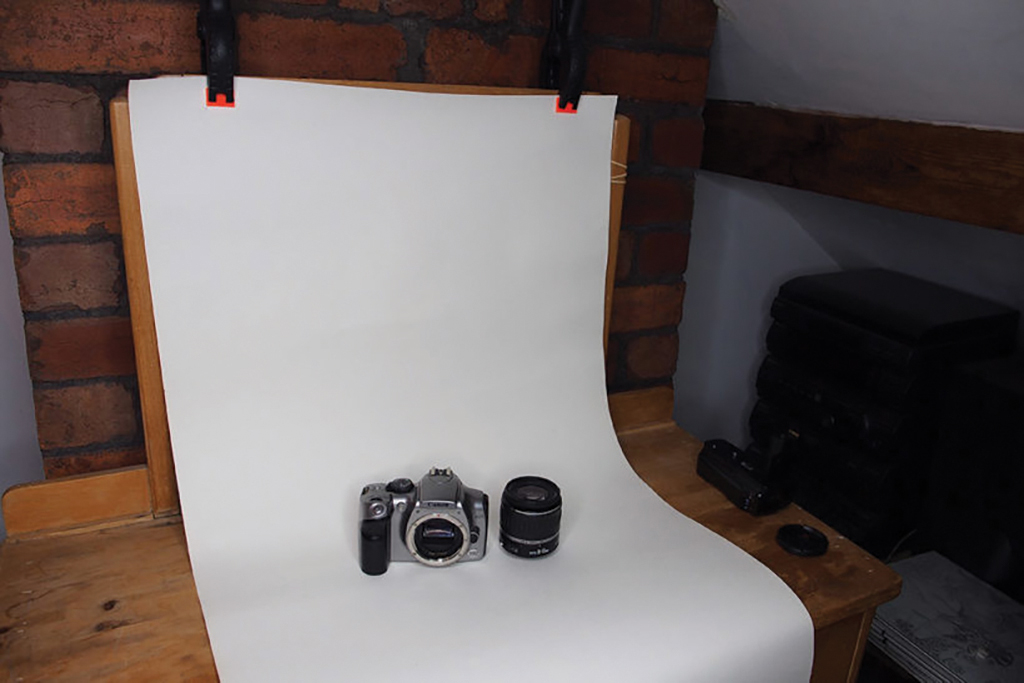
See our online guide to product photography. Picture credit: Joshua Waller
- Film is in demand
Got an old film camera body or some film lenses? Now would be a great time to trade in, says Alister Bowie of Ffordes. ‘We can’t get in enough film photography gear to meet demand and prices for decent equipment have increased signficantly.’ Just remember that not all of the bigger retailers buy in film gear, however - Protect yourself
The disadvantage of selling to a private individual through a site like eBay or Gumtree is you are more susceptible to scams or difficult buyers. eBay does a good job of vetting dodgy buyers, and you can check their feedback rating. Only accept payments through eBay, and walk away if the buyer argues. eBay has a strict policy about buying and selling outside the platform, and won’t be able to help you out if you run into problems. f you are using Gumtree or Facebook Marketplace, make sure the money is in your bank account before sending anything out. - Beware ‘feedback extortion’
When selling privately, make sure you have a clear refund procedure when posting the ad, and if a potential buyer threatens to leave you a bad review if you don’t lower an agreed price on otherwise sound gear, report them to eBay or any other private-sale platform.
Many thanks to the retailers who shared their advice and tips:
CameraWorld
Park Cameras
MPB
Ffordes
Clifton Cameras
LCE
Grays of Westminster
More AP articles on buying second-hand cameras and lenses








